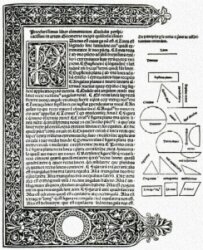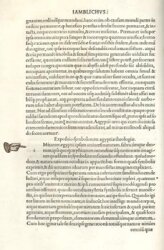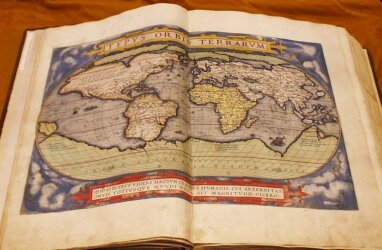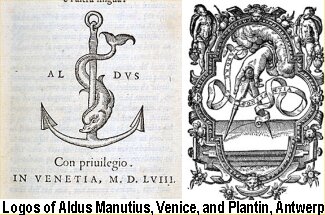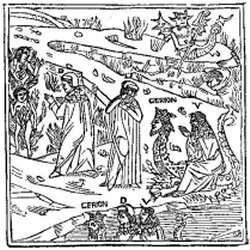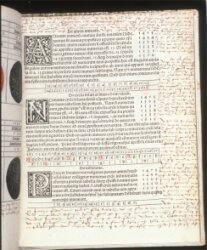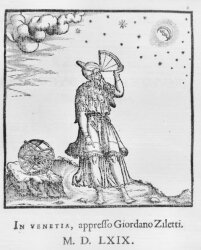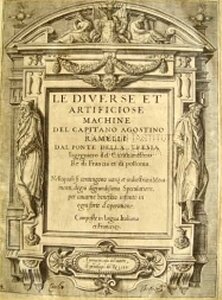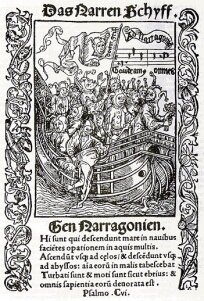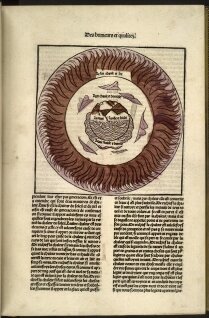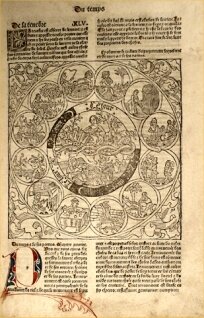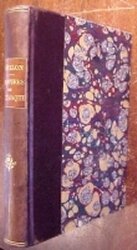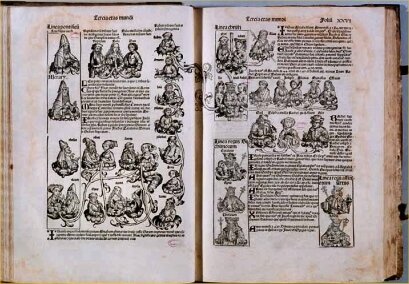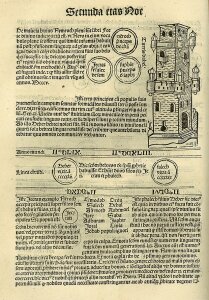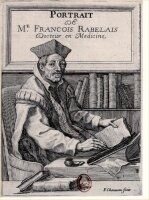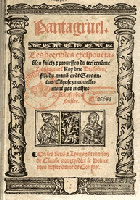Chapter 3 - Someone May Pluck Your Flower
From Literary Wiki.org
Contents |
Page 46

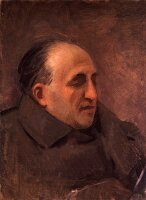
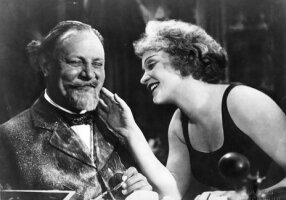
Audrey Hepburn in Roman Holiday; the poet Vincenzo Cardarelli, portrait by Amerigo Bartoli; Emil Jannings as Professor Rath (Eco has him Unrath, La fiamma p. 57) and Marlene Dietrich as Lola in The Blue Angel (p. 54).
Roman Holiday
1953 film starring Audrey Hepburn and Gregory Peck. [1]
"framed the perfect oval of her face"
Bizarrely, "perfect oval of her face" nets over 70 matches in an exact Google search. Source unknown, but apparently many people have arrived at this turn of phrase. (The italian frase has none, however.)
Page 47
"There hangs, adolescent virgin, a sacred shadow over you"
opening lines of Vincenzo Cardarelli's poem "Adolescente" (the Adolescent). text (Italian)
Cardarelli
Vincenzo Cardarelli (1887-1959). He was one of the founders of La Ronda literary review and edited La fiera letteraria (1949–55). His main themes of nostalgia, a tortured restlessness, and the passing of time are expressed with clarity of expression and a classic rhythm. Among his works are Poesie (1936, 1958), Viaggi nel tempo (1920), Il cielo sulle città (1939), and Solitario in Arcadia (1947).
Page 48
Three pages from incunables or incunabula: Euclid's Elements of Geometry (1482), Library, U.C. Berkeley; the title page of a 1570 Iamblichus edition fprinted in Lyon, now in the communal library, and a page from the beautiful 1497 edition admired by Yambo, online at the Library in the Netherlands.
Incunabulum
a book, single sheet or image that was printed — not handwritten — before the year 1500 in Europe. [2] (So te picture of the Jamblichus does not really show an incunable.)
"Venetiis mense Septembri"
(in, or at) Venice in the month of September (Latin)
Iamblichus de mysteriis Aegyptiorum
Ficino's edition of important neo-Platonic texts, first published in 1497 by Aldus Manutius of Venice. This book apparently now sells for over $10,000. The book was also a source for seekers of the occult; the "Project Hermes" editors of Foucault's Pendulum (ch.45) remark that such authors "all base their proofs on a sentence of Iambilichus."
Ficino
(1433-1499) son of the physician to Cosimo d'Medici, dedicated himself to the study of Plato and neo-Platonic thought. His translations of the whole of Plato and Plotinus into Latin were key elements in the Renaissance rebirth of Platonic thought.
Abraham Ortelius
(1527-1598) became the father of the modern atlas by issuing the world's first regularly produced atlas, the Theatrum orbis terrarum (Theatre of the world). Image above from a site at of Illinois Urbana-Champaign. Combining maps of uniform size and style with comprehensive text, the innovative Theatrum set the standard for the shape and contents of future atlases. [3]
Plantin
Plantin press at Antwerp. The Ortelius map above is from a 1584 Plantin edition.
Page 49
Dante and Virgil in an [4] from Benali's edition of the Commedia.
Commedia, Bernardino Benali, 1491
Bernardino Benagli or Benali (the name was Latinized into Benalio) was one of the founders of publishing in Venice. He was born in 1458, probably in Bergamo, and moved to Venice when he was still young and became one of the first printers of the Serenissima Republic of Venice: the incunabuli he printed are all very beautiful and now much sought-after and rare: they are a landmark in the history of Italian publishing. His first dated book was published in 1485; from then on his editions followed one another until 1543, when he died. Between 1483 and 1500 he printed 82 works, the most famous of which is still Supplementum chronicarum, by Jacopo da Bergamo,printed in 1486 with many views of Italian cities. Also La Divina Commedia of 1491 and Le favole di Esopo, translated into the vernacular, of 1492-93, both adorned with very fine xylographs, still remain real masterpieces of typographic art. He went into partnership with other printers and he worked for other publishers, as was usual at the time, since printing an illustrated book was a heavy task both from the technical and the financial point of view. Some 150 sundry editions are attributed to him.
Liber Phisionomiae, Scot, 1477
An early printed edition of Michael Scot's medieval treatise on physiognomy, the science of appearances and especially deterimining a person's nature by the face.
A page of a well-annotated 1499 Augsburg edition of Regiomontanus's Calendarium'; from a Institution online exhibit; Ptolemy inspecting the universe while pointing to the earth at its center, from a University website.
Calendarium, Regiomontanus
Johann Müller (Regiomontanus), German astronomer (1436-1476). The book would be a treatise on the astronomical and mathematical underpinnings of time calculation. [5]
Quadripartite, Ptolemy
usually called the Tetrabiblion, a work covering both geography and astronomy.
A system of locks from Zonca's Novo teatro; from a University website. The frontispiece of Ramelli's book, and Ramelli's machine for reading, a fine hypertextual device, both on a academic site, ETH.
Novo teatro, Zonca
Little is known about the life of Vittorio Zonca (1568-1602) beyond his major publication, the "Novo Teatro di Machine et Edificii" (Padua, 1607), a book on science and engineering. text (Italian)
Ramelli
AGOSTINO RAMELLI (1531-ca. 1600) - Ramelli, a military engineer to Henry III, King of France and Poland, published at his own expense what is considered to be one of the most important books on machines in the Renaissance. It was in its own time widely known and frequently imitated.
Page 50
trouvailles
an unexpected discovery; here relating to finding antiquarian books.
tout passe
(French) "everything passes"
cliché
Eco wrote an interesting [6] on the film, Casablanca, and the role of cliché: "Two cliches make us laugh. A hundred cliches move us. For we sense dimly that the cliches are talking among themselves, and celebrating a reunion."
Page 52
Round Table lovers, we slept for four years with a sword between us.
this refers to a folklore motif, "the sword of chastity," which is used in the medieval romance Amicus et Amelius. In Arthurian literature, it occurs in situations where the lovers are not in fact chaste at all: the Tristan romances and in a story of Pelleas, Gawain, and Ettard in Malory's Morte Darthur. It is also prominent in Wagner's Ring, where Siegfried places the sword between himself and Brunhild when he woos her for Gunther. (Thanks to members of Arthurnet email discussion list for guidance). The motif also occurs in the film Beyond the Sea, as a sword of chastity (briefly) protects Sandra Dee from Bobby Darin--which might suggest that the motif was going strong in the 1950s....?
Also used by Borges as a tagline to his story 'Ulrike' in 'The Book of Sand'. For a discussion of this as a motif in Borges' work and life, see 'Borges, A Life', 2005, by Edwin Williamson: "On the back of [Borges'] gravestone is portrayed an image of a Viking longship. Above it is the legend 'Hann tekr sverthit Gram ok legger i methal theira bert,' 'he takes the sword Gram and places it between them,' a quotation from the Icelandic Volsunge Saga, alluding to the hero Sigurd's placing his sword, Gram, between himself and his former lover, Brynhild, as they lie together. This is the text Borges had chosen as the epigraph for 'Ulrika,' (sic) the story that had been inspired by his brief meeting with Maria Kodama in Iceland in 1971, which tells of an encounter in York between an aging professor, Javier Otarola, and the eponymous Norwegian girl." (p. 492) Borges is, of course, a great influence on Eco (cf., e.g., 'Borges and My Anxiety of Influence' in Eco's 'On Literature', 2005).
A page from an early German edition of the Narrenschiff, at a of Freiburg website. A page from a 1486 Lyons edition in French of Bartolomeus Anglicus's De proprietatibus, showing the universe with the earth at the center (a propos the four humors and the relationships among cold, hot, wet, dry), from the of Congress; and a page from a 1491 Lyons edition of the same book, also in French, depicting relationships among various kinds of chronology, from the Library of Belgium. See below for a link to one more example of Bartolomeus.
Stultifera Navis
aka Ship of Fools aka das Narren Schiff, a famous book written by Sebastian Brant in 1494 (so actually designed for the printing press), describing and illustrating the various kinds of foolishness to which humanity is inclined. [7]
De Proprietatibus rerum, Bartholomaeus Anglicus.
De proprietatibus rerum On the Properties of Things; it is an encyclopedia dating from the 13th century; so this is an early printed copy of a medieval text. Although the De Proprietatibus is often described as a bestiary, its focus encompasses theology and astrology as well as the natural sciences (as understood in 1240). The manuscript is structured on astrological principles and is divided into 19 books which according to M.C.Seymour, is a number arising from "the sum of the twelve signs of the zodiac and the seven planets, signif[ying] universality" De proprietatibus rerum demonstrates an obvious schism between science as interpreted by Christian scripture and science as interpreted through Aristotelian concepts; there are also reflections of the ideas gradually permeating European intellectual culture from Arabic and middle-Eastern scholarship.
rubricated
Rubrication refers to the practice of beginning new paragraphs or sections of a book with a red or otherwise decorative letter. To print in more than one color was possible (see the cover of Rabelais' Pantagruel below) but often the rubrication was done by hand, giving the printed book some of the elegance of a manuscript. Like Yambo's copy of Bartolomeus Anglicus, both of the pages from this book shown above have these additions of colored letters (in the Library of Congress example, one can see a red capital I showing through from the other side). In a third example of the same book --another Lyons 1491 exemplar in the Library of Congress--one can see the space left for the illuminator to add a fancy initial letter.
"Les amoureux fervents et les savants austeres"
"Stiff scholars and the ripely amorous," first line of Baudelaire's Les fleurs du mal 66: "Les Chats":
page 53
Et mon Bureau?
last line of Arthur Rimbaud, "Les réparties de Nina." In the context of the poem, it can be translated as "And miss work?" or "And risk my job?". text (French)
Page 54
Eugenie Grandet
by Honore de Balzac - Gutenberg full text (English)
allumeuse
a woman who lights a fire, a tease or at least a woman who enjoys sexual power over men. In Foucault's Pendulum ch. 50, Belbo refers to his ideal woman, Lorenza Pellegrini a.k.a. Sophia as an allumeuse, which she takes badly. However, she does leave with Belbo, who is embarrassed by the whole scene, and who "addressed the room softly, in the tone of a man stating the obvious: 'Cock-a-doodle-do.'"
Professor Rath
In Josef von Sternberg's 1930 film, The Blue Angel, Professor Immanuel Rath, an old single teacher, is so smitten by Lola Lola (played by Marlene Dietrich), a dancer at a local club, that he is made to cock-a-doodle-doo like a rooster in front of all the dinner guests. [8] [9]. (Eco, however, kept the original name Unrath, together with its negative connotation.) The movie was based on Heinrich Mann's book, "Der Untertan".
Page 55
If I spy you passing at such regal distance...
another line from Cardarelli's "Adolescente:"
Se ti veggo passare
a tanta regale distanza,
con la chioma sciolta
e tutta la persona astata,
la vertigine mi si porta via.
Page 56
ice sphinx
"The Ice Sphinx," (Le Sphinx des glaces) an 1897 novel by Jules Verne written as a sequel to Poe's The Narrative of Arthur Gordon Pym (so important in Yambo's struggle to consciousness in Chapter 1).
As someone will pluck your flower, mouth of the wellspring, someone who won't even know, a fisher of sponges will take this rare pearl.
text (Italian)
Page 57
bouquiner
(French) 1. to hunt after, to collect, old books; 2. (informal) to read
hojear
(Spanish): to leaf through, flick through.
pandects and theological dissertations...Sant'Ambrogio market
a pandect is a copy of the Bible. (Italian pandetto can also mean a handbook on law.) Although the market associated with the church of Sant'Ambrogio (Saint Ambrose, the first person in history observed and recorded to be reading silently) is an ancient one, it seems to be of the usual varied kind, with food and clothes etc. Presumably these books are not worth sending to Rome for the tourist trade...
Fenelon's novel in an early 20th-c binding, on a website; a 1547 German copy of the Rhetoric ad Herennium now in Munich.
The Adventures of Telemachus
17th century novel by Francois Fénelon. (The title was re-used in the 20th century by Louis Aragon). A classy illustrated novel.
utopian journeys, all bound identically
in Europe, up until the mid-20th century (and still in some cases) the best quality books were not issued in permanent "hard covers" but in sewn volumes meant to be ordered by the new owner in a chosen binding from the bookseller; such collections can sometimes be seen in university libraries, which still use binderies for journals, etc. Presumably these books are each a different story, from the 17th or 18th century, of travel to some kind of paradise--probably political satires of some kind, or fantasies of Islands of the Day Before.
Ciceros and Rhetorics for Herennius
The Rhetorica ad Herennium (Rhetoric for Herennius) was a very popular schoolbook throughout the Middle Ages and for long after, as were many of Ciceros texts. It was attributed to Cicero, though here the implication is that Yambo is finding a lot of well-worn copies of 16th-century textbooks. (In stead of Cicero-texts, Eco could may be have had visitor's or traveler's guides in mind, as these are called cicerones in italian -- even human guides, for that matter.)
the stalls of Piazza Fontanella Borghese in Rome
this is a mercato delle stampe, print market, which merits mention in guide: "Virtually everything that's displayed in the dozens of battered kiosks here is dog-eared and evocatively ragtag. You'll find copies of engravings, books, magazines from the 1960s (or before), and prints and engravings that are either worthless or priceless, depending on your taste."
Aldine italics
italics are an invention of the Italian Renaissance. The first of their kind was created in 1499 by Francisco Griffo for publisher Aldus Manutius, who commissioned their creation (purportedly based on Petrarch's own script). In memory of him, italics of this type and time period are called Aldine Italics. [10] Note that Manutius is also the name of the vanity press in Foucault's Pendulum.
Images depicting history (the ages of man) from the Nuremberg Chronicle (from a at MIT) and chronicle (at the University of Sydney).
Nuremberg Chronicle
considered one of the most outstanding examples of early printing, it's a history of the world from creation to its publication in 1493. [11]
Rolewinck
Werner Rolewinck (1425-1502). His Fasciculus temporum was a famous illustrated book of the 15th century and the most popular concise world chronicle of its time. It is also the earliest chronological world history to be printed. [12]
Kircher's
Ars Magna Lucis et Umbrae - Athanasius Kircher or Kirchner (1601?-1680), was a German Jesuit who wrote some 40 books on many subjects--he was a kind of "Renaissance man" slightly after the world started getting too big for that. This particular book, "Complete Art of Light and Shadow," treats of optics and also the planets (illustration above from a 1646 edition), trying to incorporate the latest astronomical information into a geocentric view of the universe. It also has an illustration of a Magic Lantern, the forerunner of the movie projector. See Joseph McDonald's site for more information and illustrations. In chapters 78 and 88 of Foucault's Pendulum, Kircher is mentioned as a source for esoteric knowledge. .
Page 58
The above is a 1651 work by François Chauveau, a copy in the Bibliothèque Nationale de France; the title page of [13] is I think from the first edition, in 1532.
Rabelais
(c.1484-c.1553), French Renaissance writer, a Franciscan monk, humanist, and physician, famous for comic novels such as Gargantua and Pantagruel. The edition referred to is his Oeuvres published in 1741 by Jean-Frederic Bernard, Amsterdam. They sell for a few thousand dollars.
a hundred million lire
although Italy is now on the Euro, this was roughly $60,000
Page 59
cosi fan tutti
"they are all like that." "Cosi Fan Tutte" (note the 'e') is Italian for "They (girls) are all like that" and is the name of a Mozart opera.
Abbott's Flatland
Flatland : A Romance of Many Dimensions (1884) by Edwin A. Abbott is an explanations of geometry and physics for the curious non-mathematician, a satire on society and class distinctions of Victorian England, and apparently known as a sci-fi classic.
Page 60
Dante
this quotation is from Inferno, Canto 31, Line 34-37
Gabriele Dannunzio
(1863-1938) Italian poet, writer, dramatist, daredevil and war hero, who went on to have a controversial role in politics as a precursor of the fascist movement
canalazzo
the Grand Canal in Venice.
Emily Dickinson
(1830-1886) - American poet. "Let us go in; the fog is rising," are her attributed last words.
Page 61
Giovanni Pascoli
(1855-1912) - Italian writer.
Luigi Pirandello
(1867 – 1936) - Italian dramatist and novelist, awarded the Nobel Prize for Literature in 1934.
Alberto Savinio
(1891-1952) - pseudonym of Andrea Di Chirico. Italian writer, brother of famous painter Giorgio Di Chirico.
Page 62
Vittorio Sereni
(1913-1983) - Italian poet.
King Lear
Act 2, Scene 4.
Dino Campana
(1885-1932) - Italian writer.
Gustave Flaubert
(1821-1880) - French novelist. Quotation from Madame Bovary, part 2, chapter 6.
Baudelaire
quotation from Les Fleurs du Mal 103.
'Someone may pluck your flower, mouth of the wellspring
Another line from Cardarelli's poem "Adolescente" ("The Adolescent"):
"Pure qualcuno ti disfiorerà,bocca di sorgiva..." Full text (Italian)
Page 63
Scrabble
"I have been using a fantastic hypertext for the last 30 years. It is called Scrabble. Isn't it true that with Scrabble you can compose every possible cross link, every combination of sentences. It's a nice game, it can have educational purposes. Sometimes my wife who is German learned part of her English lexicon by playing Scrabble. Sometimes we play Scrabble in English, or in French. OK, but if you are a poet you have your mental Scrabble. You don't need the board to do it. It is the same I think for all those kinds of games. They can be very nice to play. So, I repeat: they can be used for training people in inventing and composing, but they have nothing to do, according to me, with the future of literature." Eco, from Conversation on Information.
acrostic
a poetic figure in which the first letters of a poem or stanza spell a word which is relevant to the meaning of the poem. Like the other words Yambo spells, it involves doubling meaning.
zeugma
A figure of rhetoric in which one element, for example the verb, does duty in two clauses or phrases--e.g., to change a sentence on the preceding page, "She was there, the fog not." [14] Also, an ancient city of the Roman empire in present-day Turkey.
amphiboly
OED: "Ambiguous discourse; a sentence which may be construed in two distinct senses; a quibble." In rhetoric, "the fallacy of amphiboly" involves a misplaced phrase or insufficiently specified pronoun which invites misinterpretation, as with the ambiguous declarations of the Oracle of Delphi. (To be sure, this is discussing the translation, not Eco's "enfiteusi", a form of land lease.)
To Moscow, to Moscow
from the first few pages of The Three Sisters by Chekhov. Famously, the sisters never do get to go to the capital. In Foucault's Pendulum ch. 73, Belbo quotes the line.
